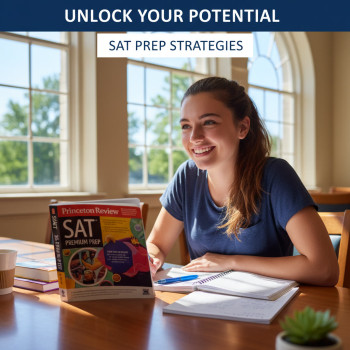What is Superscoring? A Simple Definition to Share with Parents
Imagine your child takes the Digital SAT more than once. On one day they nail the Math section. On a different day they ace Evidence-Based Reading and Writing. Superscoring is a fair, practical approach some colleges use where admissions officers look at the best section scores across multiple test dates and combine them into a new, higher “superscore.”
That means instead of only considering your child’s single best overall test date, a superscoring school examines each section independently and builds the strongest possible composite score from different dates. It’s like picking the best notes from multiple rehearsals to create the strongest performance.

Why Parents Should Care (And What to Reassure Them About)
For many parents, standardized testing feels mysterious and high-stakes. Here’s why superscoring matters and how you can reassure them:
- It can raise an applicant’s visible score without the student needing to retake every section.
- It encourages students to keep trying; improvement in one area can meaningfully affect outcomes.
- Not every college superscores—but many do. Knowing a college’s policy helps families decide whether to send all scores or only selected ones.
So tell parents: superscoring doesn’t magically change past performance—it just gives colleges a clearer picture of a student’s peak abilities across multiple sittings.
How Superscoring Actually Works (Concrete Example)
Numbers help. Here’s a realistic—yet simple—example you can walk through with a parent when sitting down with your child’s scores.
| Test Date | Evidence-Based Reading & Writing (EBRW) | Math | Composite |
|---|---|---|---|
| March | 650 | 610 | 1260 |
| May | 620 | 680 | 1300 |
| Superscore | 650 (best EBRW) | 680 (best Math) | 1330 (combined) |
In this example, the superscore (1330) is higher than either single test date because each section’s best performance comes from a different sitting.
Why This Helps
- It rewards focused improvement—if your child made big gains in Math but not reading, that Math improvement still counts.
- It reduces pressure to get everything perfect on the same day.
- It can influence scholarship and admission decisions where colleges consider the highest demonstrated potential.
Which Colleges Superscore — and Why That’s Not Always the Whole Story
It’s tempting to blanket the admissions world with a single rule: “All colleges superscore.” But the reality is nuanced. Colleges set their own score-use practices. Many institutions do superscore because it lets them evaluate potential more flexibly; others focus on the highest single-test performance, and a few have selective or conditional policies (for instance, requiring all scores to be submitted).
So the best practical advice you can offer parents: check each college’s policy early in the application process, and plan testing and score-sending accordingly.
How to Find and Interpret a College’s Policy (Plain Steps)
- Look at the college’s admissions page under “testing” or “application requirements.”
- Search the college’s FAQ for terms like “superscore,” “score choice,” or “how we evaluate test scores.”
- If the policy is unclear, call or email the admissions office and ask specifically: “Do you superscore the SAT?”
- Keep a running spreadsheet of each school’s policy so decisions about retesting and sending scores are evidence-based.
Practical Score-Sending Strategies for Families
Once you know whether a college superscores, the next question is: should you send all scores or only the best dates? Here are straightforward strategies:
- If a college superscores and encourages all scores: consider sending every official score. Admissions officers can build the best profile from section-level performance.
- If a college does not superscore and uses the highest single test date: send the single best overall test date.
- If a college requires all test scores: you’ll need to send every sitting—plan for transparency and make the most of the student’s upward trend in essays and recommendations.
- If you’re unsure, a safe default for many students is to send all scores to colleges that superscore and to send only the best single date to those that don’t—once you’ve confirmed policies.
How Families Can Save Money While Making Smart Choices
Students get a limited number of free score reports at registration or on test day in some circumstances. Outside of that, each additional score report costs money. That’s where a prioritized plan helps: decide which colleges are most important, confirm their policies, and send scores strategically. For students working with a college counselor or a tutoring service, this planning is often part of the package.
When Superscoring Doesn’t Apply (Important Exceptions)
There are cases where superscoring won’t help:
- Some highly selective schools may only consider a student’s highest single test date.
- Programs that require subject tests, portfolios, or auditions may prioritize other parts of the application.
- Scholarship committees sometimes have specific rules about which scores they consider.
Make sure parents understand that superscoring is a helpful tool but not a universal fix—other parts of the application still matter a great deal.
How to Explain Superscoring in 90 Seconds: A Script for Parents
Sometimes parents just need a quick, reassuring elevator explanation. Here’s a short script your student can use to explain superscoring to a busy parent or guardian:
“Superscoring is when a college looks at the best part of each SAT test—like your best Math score and your best Reading score—and combines them. It can raise your final score without retaking everything. But not every college does it, so we’re checking each school before we decide which scores to send.”
How to Use Superscoring to Inform a Study Plan
Superscoring creates a sensible study roadmap: focus on improving section-level weaknesses rather than trying to perfect both sections at once. Here’s a practical four-step approach parents and students can follow together.
- Assess: Look at section-level scores across test dates to spot patterns (e.g., strong reading, weaker algebra basics).
- Prioritize: Target the section where realistic gains are largest with the least amount of time—for many students, that’s Math problem types with repeatable strategies.
- Practice: Use focused practice sets and timed sections to build stamina and accuracy.
- Retest Strategically: Take a second or third sitting only when you and your tutor/counselor see consistent improvement in practice tests.
Example: A 6–8 Week Targeted Plan
- Weeks 1–2: Diagnostic and fundamentals review (fractions, algebra, grammar rules).
- Weeks 3–4: Focused practice on weak question types with timed sections.
- Weeks 5–6: Full-length digital practice tests and targeted review of mistakes.
- Weeks 7–8: Final polishing, test-day routines, and confidence-building.
For families who want extra structure, personalized tutoring—like Sparkl’s 1-on-1 guidance and tailored study plans—can help accelerate gains by focusing lessons on the very question types that cost the most points.
Real-World Tips When Talking to Anxious Parents
Parents often worry that test scores define their child. When explaining superscoring, frame the conversation around strengths, strategy, and a balanced application plan:
- Start with strengths: emphasize what the student does well and how that already helps college applications.
- Explain the practical upside of superscoring: it rewards section-level excellence without pressuring the student to be perfect in one sitting.
- Discuss the rest of the application: essays, recommendations, extracurriculars and grades remain vital.
- Offer a clear plan: timelines for practice, potential test dates, and specific next steps—this calms anxiety and focuses effort.
How Counselors and Tutors Can Support Superscoring Strategies
College counselors and tutors are partners in this process. They can:
- Help interpret score reports and identify section-level improvement opportunities.
- Create tailored practice plans that target the most fruitful areas of improvement.
- Advise on when to retest and which colleges should receive which scores.
Services that combine human expertise with intelligent analytics—like Sparkl’s blend of expert tutors and AI-driven insights—can make this process more efficient by translating practice results into clear next steps.
Common Parent Questions — Answered
Q: If my child’s superscore is higher, will that guarantee admission?
A: No test score guarantees admission. Superscores can strengthen an application, but colleges evaluate the whole student—grades, coursework rigor, essays, recommendations, and activities all play essential roles.
Q: Should we send all test scores to every college?
A: Not necessarily. If a school superscores and encourages all scores, sending everything can be helpful. For schools that don’t superscore, sending only the best single date may be wiser. Confirm each college’s policy and make a decision tailored to that school.
Q: How many times should my student take the SAT?
A: There’s no magic number. Many students take the test 2–3 times. The key is that each retake should be deliberate: only retest after targeted practice and measurable improvement on practice tests.
Checklist for Families: What to Do Next
- Collect all official score reports and section-level breakdowns.
- Create a short spreadsheet listing each college and its score policy.
- Decide whether to retest based on measurable practice improvements, not on hope.
- If using tutoring, ask for a focused plan that targets the weak section—1-on-1 tutoring can shorten the timeline to improvement.
- Plan score-sending strategically when application deadlines approach.
One-Page Parent Summary to Share with the Family
When you want to keep the entire family on the same page, hand them this concise summary:
Superscoring means colleges that use it combine a student’s best section scores from different SAT dates to make the highest possible composite. It’s helpful because it rewards improvement section-by-section, reduces day-to-day pressure, and often improves the visible score without retaking everything. Not all colleges superscore—check each school’s admissions policy. Use targeted practice, consider strategic retesting, and prioritize sending scores based on what each college prefers. Remember: test scores are important, but they’re only one part of a holistic application.

Final Thoughts: Keep Perspective, Keep Momentum
Explaining superscoring to parents is mostly about translating jargon into choice and calm. Superscoring gives students an extra avenue to show their strengths, but it’s not a silver bullet. The most effective approach combines clear knowledge of college policies, a realistic testing plan, and targeted preparation—ideally supported by experienced guidance when helpful. Personalized tutoring that offers 1-on-1 instruction, tailored study plans, and data-driven insights can accelerate progress and reduce stress; if your family chooses that route, look for programs that adapt to your student’s schedule and learning style.
At the end of the day, the goal is the same for parents and students: to present the best possible application that reflects the student’s talents, work, and potential. Superscoring is simply one tool in that broader strategy—use it wisely, explain it simply, and let it support the story you’re already building through coursework, activities, and authentic essays.
Resources to Keep Handy
When you need to follow up, jot these next actions on a sticky note:
- Confirm each college’s score policy (superscore? single-date? required-all?).
- Set a test date only after 6–8 weeks of targeted improvement on practice materials.
- Maintain a practice log showing question types missed and strategies used to fix them.
- Consider 1-on-1 tutoring for focused section improvement and confidence-building.
Closing: A Conversation Starter
If you leave one thing with a parent, let it be this: superscoring is about fairness and clarity. It lets colleges see what a student can do at their best in each area. When you combine that insight with a thoughtful study plan and consistent support, the result is less stress and a stronger application. So take a breath, make a plan, and lean on the people and tools—teachers, counselors, and tutors—who can help your student put their best score forward.
Good luck—and remember: progress is often quieter and steadier than the pressure suggests. Build toward it, one focused session at a time.















No Comments
Leave a comment Cancel